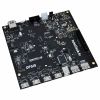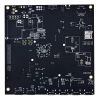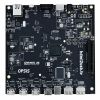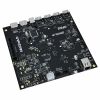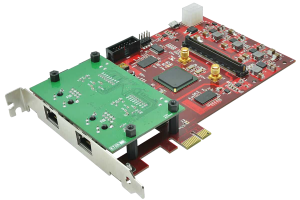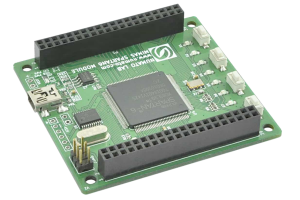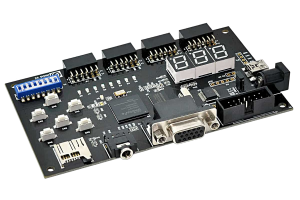Numato Opsis: FPGA-based open video platform
Request For QuoteWanna Customize? Drop Us A Line!
This product is now obsolete!
Numato Opsis is a powerful Spartan 6 FPGA-based open source video platform for videographers and visual artists. The Opsis board is designed to give the user complete control over high-speed video, enabling everything from real-time conference capturing solutions, to experimental visual art and even general FPGA-based video and imaging research.
Please note that this product is an open-source platform developed by Numato Lab in collaboration with TimVideos.us community. Any and all software available is created, maintained, and supported by the TimVideos.us community. Numato Lab’s support and warranty are limited to the physical hardware.
Features
- FPGA: AMD Spartan-6 S6LX45T
- Memory: 256 Megabytes of DDR3-1600 RAM
- HDMI Inputs: 2
- HDMI Outputs: 2
- HDMI Resolution: 1080p30, 720p60, 1280×1024@60Hz
- DisplayPort Inputs (Experimental): 1
- DisplayPort Outputs(Experimental): 1
- DisplayPort Resolution: up to 4096 × 2304 × 30 bpp @ 30 Hz
- MicroSD card holder
- 128-Mbit SPI flash for configuration data
- USB 2.0 Device: Cypress FX2 chipset supported by fully FOSS toolchain, real-world transfer rates of 30-40 Megabytes/second, and serves also as a USB JTAG programmer and a USB UART adapter
- USB 2.0 OTG: Supports both host and device operation compatible with many USB devices (e.g. keyboards and flash drives)
- Ethernet: Gigabit Ethernet with unique MAC address
- Dimensions: Standard mini ITX mounting
- Default Firmware: Demo functionality, USB controller set to be a USB JTAG programmer
- License: Creative Commons BY-SA
Hardware design and firmware available for download at the links below.
Hardware design repository
Hardware documentation (source repository)
- A: HDMI Out 1
- B: HDMI Out 2
- C: HDMI In 1
- D: HDMI In 2
- E: DisplayPort Out
- F: DisplayPort In
- G: USB 2.0 Device / JTAG Programmer / UART Adapter
- H: Expansion Port (TOFE, not PCI-Express compatible)
- I: microSD (underside of the board)
- J: USB 2.0 OTG
- K: Gigabit Ethernet
As a collaboration between the TimVideos.us live event streaming project and Numato Lab, the Opsis is the ideal device for the HDMI2USB.tv video capturing firmware, which allows for “fool-proof” video recording from any computer. Enabling direct acquisition of video streams in real-time to a computer through the USB 2.0 interface or sent over the network through the Gigabit Ethernet interface, the Opsis is a vital component within the complete conference recording solution envisioned and pioneered by the TimVideos.us project.
Running HDMI2USB Firmware
The Opsis was designed to run the HDMI2USB firmware developed by the TimVideos.us project. This firmware makes it easy to build an automated conference/event recording system. The diagram below shows one such a simple scenario. The HDMI output from the laptop is fed into the Opsis, which forwards it to an external monitor and simultaneously allows another computer to capture the output via the USB 2.0 interface. The HDMI2USB.tv firmware emulates a standard UVC webcam, allowing any video software, such as Skype, Google Hangouts, or WebRTC, to then send it to an online audience.
A more complex scenario is shown below. The Opsis is used to feed the output from a presenter’s laptop onto both a large projection screen and a private “confidence screen” for the speaker (probably at the foot of the stage). The speaker’s dramatic facial expressions are also captured by an HDMI camera. Using the USB interface, a capture computer is able to switch between the two inputs and rebroadcast online.
The HDMI2USB.tv firmware project has experimental support for using the Gigabit Ethernet interface as an alternative capture interface and is developing algorithms for hardware-based mixing and scaling, such as picture-in-picture.
General-purpose FPGA Development Platform for Video
In addition to running the HDMI2USB firmware, the Opsis can be used as a powerful FPGA development platform. The AMD Spartan-6 LX45T FPGA on this board can hold extremely large designs and can be used with the free Xilinx ISE Webpack software. The 2 Gbits (256 Megabytes) of onboard DDR3 SDRAM allow ample data storage accessible at high speeds. Onboard USB 2.0 and Gigabit Ethernet controllers allow high-speed, high-bandwidth connectivity to workstations and the network. With a USB host stack, the built-in USB OTG controller can connect to a wide variety of peripherals, such as keyboards, mice, cameras, and other USB devices. The programmable USB device controller can act both as a JTAG programmer and as a serial converter to be used as a debug console to assist development and debugging.
Downloads
Specifications
| Attribute | Value |
|---|---|
| Weight | 0.8 lbs |
| Dimensions | 12 × 9 × 2 in |
| Memory | |
| HDMI Inputs | |
| HDMI Outputs | |
| GTP Transceivers on Display Port Connector | 2 |
| SPI Flash | 128 Mb |
| Ethernet | |
| HTS | 8542.39.0001 |
| ECCN | 3A991.d |

